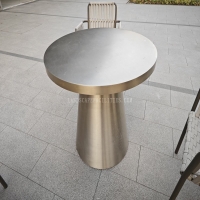Welcome to the website for landscape facilities products and knowledge.
How do landscape chairs perform in environments with high exposure to construction dust or debris?
Landscape chairs designed for outdoor use often face harsh conditions, especially in environments with high exposure to construction dust or debris. Their performance largely depends on material selection, design durability, and maintenance practices.
Material Resilience
High-quality landscape chairs are typically made from robust materials like powder-coated aluminum, reinforced polypropylene, or treated teak. These materials resist corrosion, abrasion, and dust accumulation. Powder-coated finishes, for instance, prevent dust from adhering easily, while polypropylene chairs can be hosed down without damage.
Design Adaptability
Chairs with minimalist designs and fewer crevices perform better in dusty environments, as debris doesn’t accumulate in hard-to-clean areas. Foldable or stackable models are also advantageous, allowing for quick storage during peak construction activity.
Maintenance Tips
Regular cleaning with water and mild soap preserves the chair’s appearance and functionality. For metal frames, occasional lubrication of hinges prevents dust-induced stiffness. Covers or tarps can provide temporary protection during heavy debris exposure.
Longevity Considerations
While no chair is entirely immune to wear, selecting UV-resistant and weatherproof options ensures longer lifespan. Brands specializing in commercial or industrial outdoor furniture often offer better dust and debris resistance.
In summary, landscape chairs can thrive in dusty construction environments if crafted from durable materials, designed for easy maintenance, and properly cared for. Prioritizing these factors minimizes downtime and replacement costs.
Related search:

Recommendation
Outdoor Metal Table - Classic Outdoor Furniture, Stainless Steel Table, Durable and Reliable